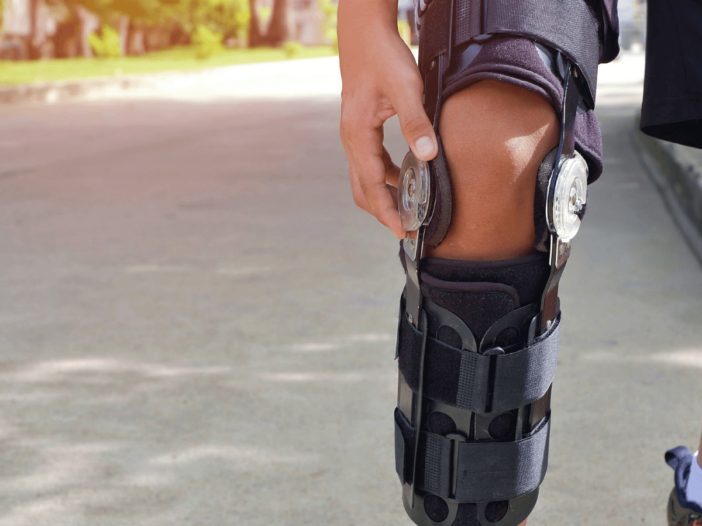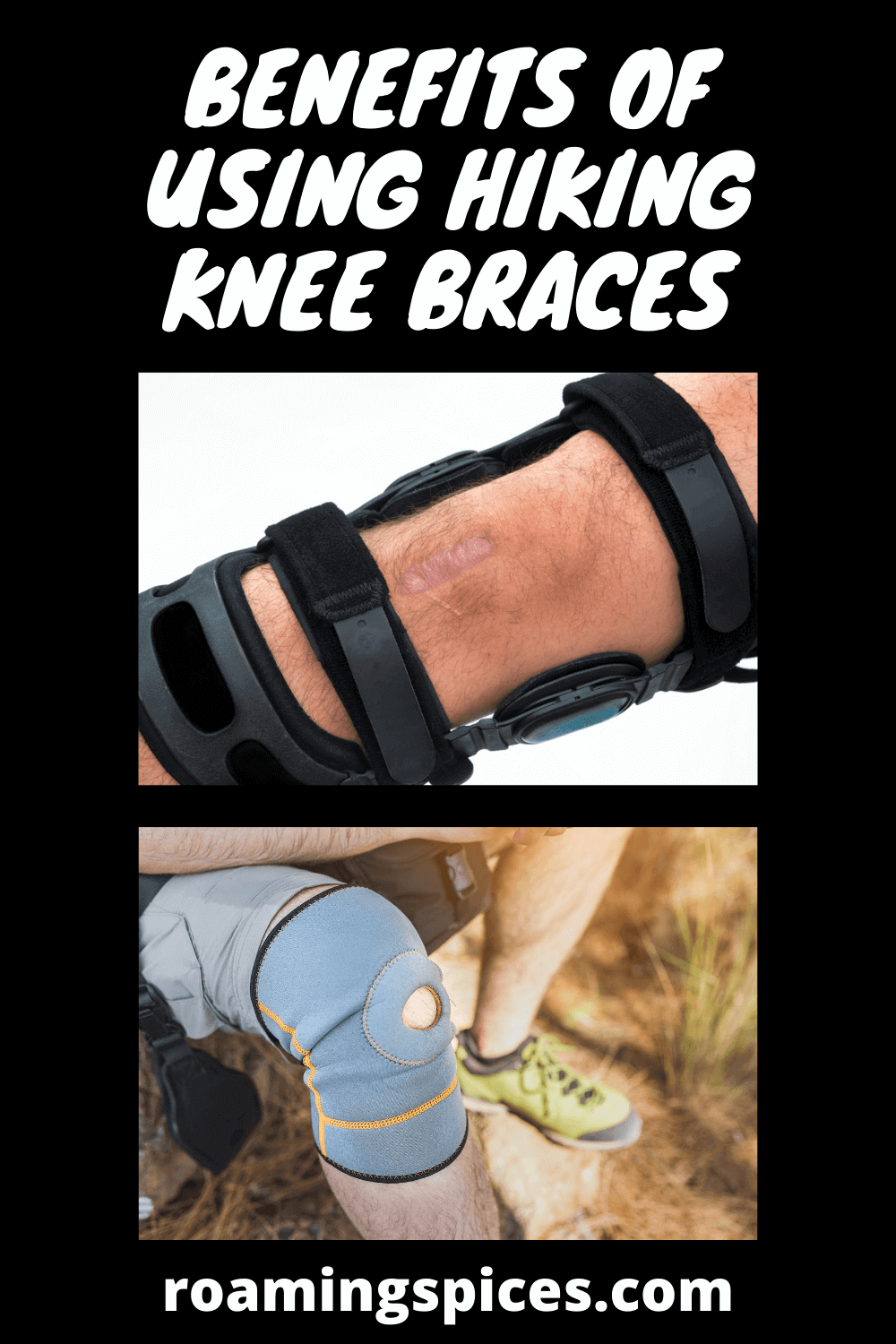
Health & Fitness
Hiking, especially on mountainous terrain, can be quite taxing on your body. While steep ascents are straining for your quads and calves, it’s your knees that need to absorb downhill steps. Therefore, to protect your knees while hiking, you might want to consider wearing hiking knee braces
Knee Pain During or After Hiking: Why It Happens and How to Prevent It
We don’t have to tell you about the benefits of hiking in this article—since you’re reading this, you’re probably already a hiking enthusiast. We might, however, have to touch on some of the discomforts that may come with (long) hikes.
From sore shoulders, blisters and sunburns to suffering from knee pain after hiking, avid hikers will experience them all at some point (sometimes even together). This article is all about why you may have sore knees after hiking, how to prevent hiker’s knee, and how to treat knee pain during and after hiking.
Hiker’s Knee: Causes, Symptoms and Treatments
Even the most seasoned and experienced hikers sometimes get sore knees while hiking. When it happens to you, I know it can be worrisome. I have fairly sensitive knees and suffer from hiking knee pain regularly myself. Yet, knee pain does not need to be a huge deal, if—and that’s a big if—you deal with it right away and properly.
Commonly called “hiker’s knee” or “runner’s knee”, this painful condition is officially known as patellofemoral pain syndrome. While it can be painful, it’s a pretty common overuse symptom, which can be treated relatively easily.
Causes
Knees are both the largest and one of the most complex joints in your entire body, a combination of bones, ligaments, muscles, tendons, cartilage and the kneecap. They’re a beautiful part of the human body, but their complexity also means that things can go wrong.
Knee pain after hiking downhill is a particularly common nuisance among hikers. This is especially true for long-distance and thru-hikers who carry heavy backpacks. Beginner hikers may also suffer from hiking knee pain on short walks.
Although a physical misalignment of the kneecap can cause patellofemoral pain syndrome in some people, almost all hikers who suffer from hiker’s knee get it because of overuse.
Nearly always, it is the result of prolonged strain and stress on the knees, which each have to absorb essentially all your body weight when you walk. During exceptionally strenuous hikes or long and steep descents, for example, this exhausts the many different parts of your knees, resulting in knee pain.
Additionally, other factors that can cause knee pain while hiking includes wearing new hiking footwear, doing unusually long hikes, or a sudden increase in the frequency of your hikes (with few periods of rest in between).
Symptoms
The symptoms of hiker’s knee are quite obvious and straightforward: pain in and around your knee(s). This knee pain usually starts off gradually as a mere nuisance but can turn into severe shooting pains every time you put weight on your knee(s).
OrthoInfo lists the following hiking knee pain symptoms:
- Pain while partaking in activities and exercise where you repeatedly have to bend your knee, including hiking, running, jumping and climbing stairs.
- Pain in your knees after sitting down in a fixed position for an extended period of time, such as in a plane or a movie theatre.
- Crackling or popping noises in your knees when you walk up stairs or stand up after sitting.
Treatments
Just because hiker’s knee is an overuse injury, it’s fairly easy to treat it. Getting enough rest is the key to a successful healing process. From the moment you feel pain in your knees after hiking, it’s important to give your legs some obviously much-needed rest.
In case the pain originates mid-hike, you can take ibuprofen—an essential item in your hiking first-aid kit!—to reduce some of the pain. If you can, apply some ice, snow or cold water to your knee.
Basically: stop doing the activity that makes your knees hurt as soon as possible until they’ve fully healed. The RICE method is an extremely effective treatment process when your knees hurt after hiking:
- Rest
- Ice
- Compression (which is where hiking knee braces can be hugely beneficial)
- Elevation
When you’ve successfully treated your hiker’s knee, you should focus on preventing the injury from occurring in the first place once you start hiking again. There are several ways you can do that…
How to Prevent Hiking Knee Pain
From muscle-strengthening exercises and taking your time on the trail to using trekking poles and wearing hiking knee braces, there are a handful of ways you can prevent knee pain when hiking.
Get Stronger
The logic is pretty simple here: the stronger your body, the more resilient and healthier it will be. Many knee injuries while hiking are the result of prolonged stress on the knees, often caused by weak quadriceps muscles or insufficient training.
Make sure to start working out, prioritizing all your leg muscles. Everything from your hamstrings and quads to glutes and calves constantly stabilize and support your knees. The best knee support for hiking comes from your own muscles.
So, the better conditioned and trained your legs are, the more supported your knees will be. Do some lunges, squats, jumps, wall-sits, step-ups and lateral shuffles on a regular basis. Your body will thank you later!
Warm-Up & Stretch
Even the most elite athletes need to warm up before they can perform at their peak levels. The same principle applies to hikers—whether you’re a beginner or expert.
Now, most day hikes will start off fairly gradually and gently, which should be a sufficient warm-up for your leg muscles. However, it’s still important to do some stretching before you begin the most challenging part of your hike. Stretch all your leg muscles—hamstrings, quads and calves—to loosen them up and lower the risk of any leg injury.
Use Trekking Poles
We’ve already talked about how to use trekking poles correctly in this blog post. In that post, we’ve given several benefits of using trekking poles, one of which specifically stated that “they offer extra support and protect your knees when hiking downhill.”
Whether or not you’re a fan of trekking poles, the fact is that they do help redistribute and absorb some of your body and backpack weight. Without poles, it’s your knees and ankles that have to bear the full load with every single step you take. Poles can channel some of that weight to your shoulders and arms.
Take It Easy
This tip is beneficial for both your physical and mental health. Unless you’re running from an impending storm or trying to get back before nightfall, there’s no need to rush up and down the trail. Hiking is supposed to be an immersive experience that reinvigorates your mind.
Take your time climbing a slope; take it easy going downhill. The latter is especially important because, after a strenuous ascent, your legs and knees will be tired already. You do not want to speed downhill after that. The faster you descend, the more stress and force will be put on your knees. Slow down!
Wear Hiking Knee Braces
Last but definitely not least, wearing hiking knee braces is a good idea if—like me—you have sensitive knees. This type of hiking knee support is only a supplemental tool, though.
Knee braces will not cure or treat any injury, but simply prevent it from hurting more or getting worse. While they are definitely a worthwhile piece of gear to have in your kit, it’s equally as important to follow the four other tips above.
Hiking knee braces offer external support to your knees, which may be exactly what you need for day or weekend hikes. So-called knee sleeves are especially well suited for this purpose.
If you’re planning a long-distance or thru-hike, on the other hand, you might want to consider knee straps, which are hiking knee braces that are looser and less restrictive. (A knee brace for hiking that has a hole for the kneecap, versus a completely enclosed knee sleeve, is also a good option for multi-day hikes.)
Conclusion
To summarize, hiker’s knee is a hiking injury that’s pretty common, but can easily be prevented and treated. As with many things, prevention is always better than treatment, so we recommend that you focus on that.
- Stay in shape, train your leg muscles
- Stretch
- Consider using trekking poles on strenuous hikes
- Take it easy on the trail, slow down
- Wear hiking knee braces
As far as treatment goes, the RICE method offers the best guidelines: Rest, Ice, Compression (knee braces!) and Elevation. Even while resting, you can—and possibly should—wear a knee brace to reduce the pain and provide compression around your knee.
This is exactly why hiking knee braces are doubly beneficial, playing a significant role in both prevention and treatment.
Like Our Article? Please Pin it!


Leave a Reply